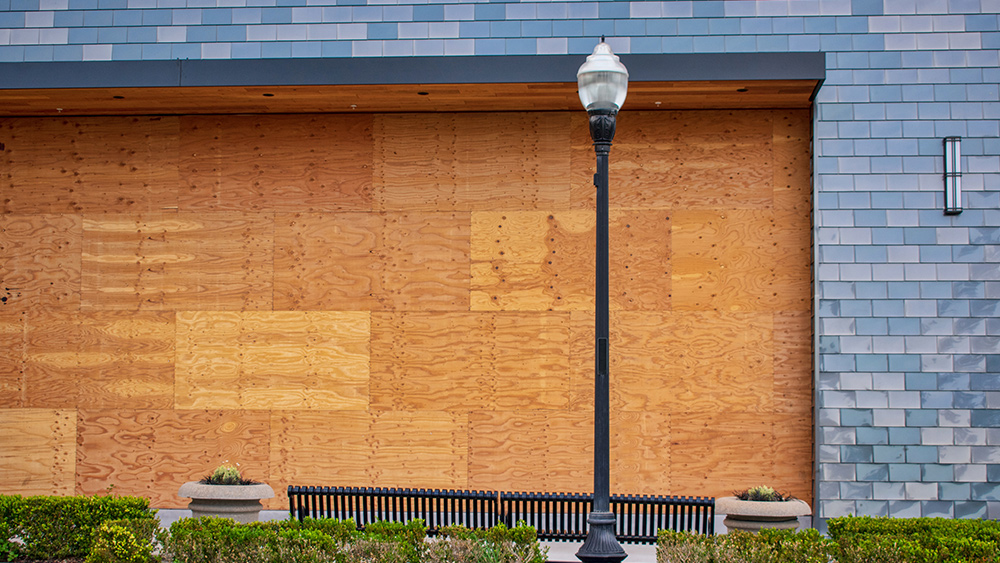California energy prices soaring due to “green” disaster
04/01/2024 / By Ethan Huff

Electricity prices in California are steadily increasing as the Golden State converts its grid into a “green” energy production system.
Last year, residential electricity prices in California rose by 3 cents per kilowatt-hour, representing an increase of 11.9 percent. The average homeowner in California resultingly pays 28.9 cents per kilowatt-hour for electricity, making California the third-most expensive state for electricity in the United States behind Connecticut and Hawaii.
While a 3 cent per kilowatt-hour increase may not sound like much to some, it is only the beginning of California’s energy woes. Because the California Public Utilities Commission unanimously approved a new green energy scheme scheduled for full implementation in 2032, the clock is ticking for a transition that one media outlet says means California energy rates “are headed for the exosphere.”
“The California Public Utilities Commission unanimously approved a scheme that aims to add more than 25 gigawatts of renewables and 15 gigawatts of batteries to the state’s electric grid by 2032 at an estimated cost of $49.3 billion,” reports Watts Up With That.
“In addition, the California Independent System Operator released a draft plan to upgrade the state’s transmission grid at a cost of some $30.5 billion. The combined cost of those two schemes is about $80 billion.”
Recognizing that inflation, particularly in utilities, continues to climb, the $80 billion estimate is likely far too low. By the time those latter years getting closer to 2032 arrive, assuming current economic conditions continue or worsen, the true price tag could balloon to a figure much, much higher than what state officials are anticipating.
“Whatever the ultimate price tag, the state’s aggressive alt-energy plans will inflict more economic pain on the low-income residents of a state with the dubious distinction of having the highest poverty rate in the United States.”
(Related: California landfills are piling up with green energy waste, which is highly toxic and environmentally destructive.)
California’s green energy producing more carbon than pre-renewables
California has been on the green energy path for many decades, but things really got going in 2008 when then-Gov. Arnold Schwarzenegger signed an executive order calling on state utilities to derive one-third of their power from so-called renewable sources by the year 2020.
At the time, Schwarzenegger called the plan “the most aggressive target in the nation,” but what he did not clearly iterate is the fact that this massive conversion would come with a seriously high price tag, especially for the state’s poor and ever-dwindling middle class.
In order to convert that much energy production to renewables, California utilities had to make some major upgrades and transitions. In 2008, just 3.1 percent of California’s energy production came from wind and solar. Today, that figure has increased to 25.7 percent, which is pretty close to Schwarzenegger’s energy targets.
Despite all these changes, though, California’s electric generation still produces the same amount of carbon, which climate lunatics everywhere are convinced is destroying the planet. Furthermore, California’s total electricity use continues to fall, meaning all that new renewable energy is doing absolutely nothing to reduce carbon.
Put differently, California’s increasingly green energy grid is producing the same or more carbon output than its pre-renewables grid, and this at the same time that electricity usage rates are falling.
“All-sector electricity use in the state fell 11.2% between 2008 and 2023,” Watts Up With That explains. “That reduction in power use has likely helped reduce the state’s overall CO2 emissions, which … have declined since 2008.”
“But California is nowhere near net zero, and the carbon intensity of electricity production hasn’t budged in more than a decade.”
In other words, overall carbon dioxide emissions in California are falling somewhat due to varying factors, one of them not being its increasingly renewables-based energy grid.
While solar panels on residential rooftops and businesses are popular all over California, helping to reduce energy costs for people who have them, the fact remains that everyone else is subsidizing these solar panels out of their own pockets.
The Public Advocates Office released a report back on February 8 revealing that solar incentives in California will cost “customers without solar an estimated $6.5 billion in 2024.”
If you live in California, it makes sense to take advantage of these subsidies if you do not already have solar. And if your rooflines point in the best directions, you can take advantage of the lucrative energy buyback programs that The Public Advocates Office admits work in the favor of homeowners.
All in all, these types of climate programs are great for people with means, but not so great for the state’s poor who do not have solar panels and basically pay for them through increasingly higher electricity prices.
“The average customer without rooftop solar pays 10 percent to 20 percent on their electricity bills to subsidize rooftop solar on the homes of others,” reads a letter sent from the Legislative Analyst’s Office to Sen. Maria Elena Durazo (D-L.A.) back in January.
The latest news about the green energy scam can be found at GreenTyranny.news.
Sources for this article include:
Submit a correction >>
Tagged Under:
big government, California, carbon dioxide, carbon emissions, climate, Collapse, collapseifornia, debt bomb, economic riot, electric, electricity, energy, energy report, environ, green, green power, green tyranny, Grid, national debt, renewable energy
This article may contain statements that reflect the opinion of the author
RECENT NEWS & ARTICLES
COPYRIGHT © 2017 CALIFORNIACOLLAPSE.NEWS
All content posted on this site is protected under Free Speech. CaliforniaCollapse.news is not responsible for content written by contributing authors. The information on this site is provided for educational and entertainment purposes only. It is not intended as a substitute for professional advice of any kind. CaliforniaCollapse.news assumes no responsibility for the use or misuse of this material. All trademarks, registered trademarks and service marks mentioned on this site are the property of their respective owners.



















